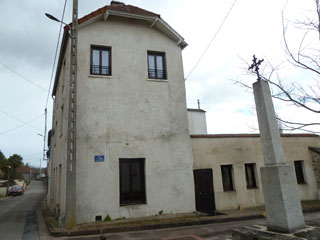Prochain point : lat="49.062489999986774" lon="1.60134"

CLACHALOZE
Limestone cliffs
A patchwork of landscapes...
In the Gallo-Roman era, the name of the village appeared in different forms:
Gomeri Curion, Gomeri Curia, Gommercourt and finally
Gommecourt. The landscape of Clachaloze stretches out in successive bands: the limestone hillside and its chalky peaks, the residential area, a belt of gardens at the foot of the houses, crop fields and finally the Seine. The chalky, clay-rich lands are fertile for crop growing: for centuries, the chalky slope and siliceous plateau, were used to grow grape vines and fruit trees. As early as the Middle Ages, the slopes on the edge of the Seine were covered with vineyards. Fruit trees (peach and apricot trees etc.) were often planted alongside the rows of grape vines. Unfortunately, from 1871,
Phylloxera vastatrix, or grape phylloxera, a tiny destructive insect, decimated the vines. An infestation in the vine stock killed the vine within three years, it therefore took time for people to realise that disaster was unfolding. The decline of the vineyards on the Seine took place mainly around 1898.
…influenced by the Seine
Under the monarchy, the entire economy of the Paris basin revolved around feeding the capital. This huge flow of products was transported by river. Apart from commercial transport, the Seine was also long used for both professional and hobby fishing. From the 19th century, mainly due to the law of July 13, 1906 establishing weekly time off work, Parisians escaped to the near countryside to enjoy leisure activities such as fishing and open air balls.
This hamlet on the edge of the Seine had a multi-service business, serving as cafe, hotel, restaurant and shop, next to the
Place de l’Arbre de la liberté. This business was converted into a house during the second half of the 20th century.



